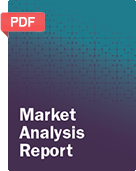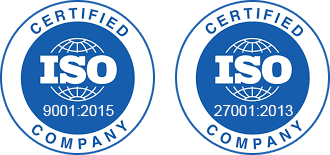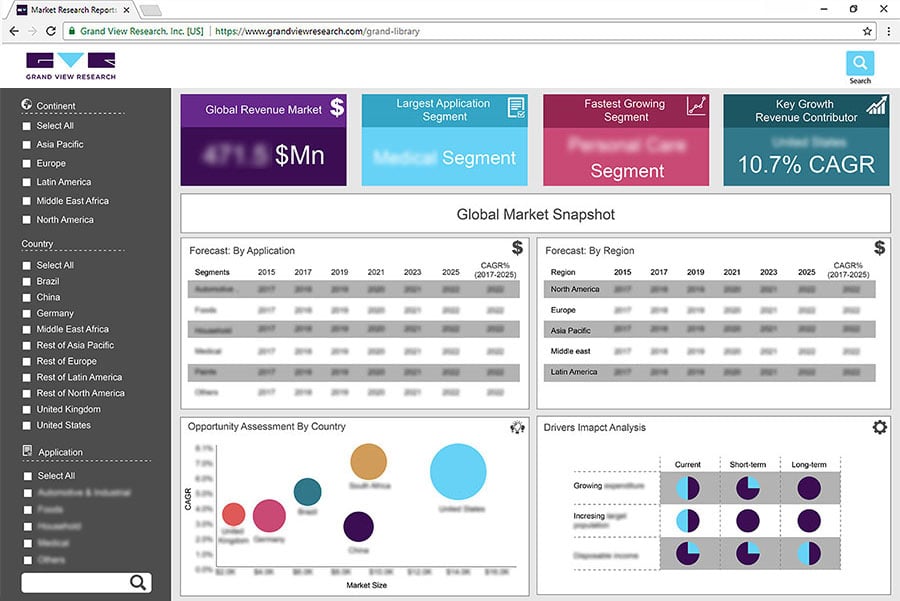
Biotechnology Market Size, Share & Trend Analysis By Technology (Nanobiotechnology, DNA Sequencing, Cell-based Assays), By Application (Health, Bioinformatics), By Region, And Segment Forecasts, 2024 - 2030
- Report ID: 978-1-68038-134-4
- Number of Report Pages: 135
- Format: PDF, Horizon Databook
- Historical Range: 2018 - 2023
- Forecast Period: 2023 - 2030
- Industry: Healthcare
Research Methodology
A three-pronged approach was followed for deducing the biotechnology market estimates and forecasts. The process has three steps: information procurement, analysis, and validation. The whole process is cyclical, and steps repeat until the estimates are validated. The three steps are explained in detail below:
Information procurement: Information procurement is one of the most extensive and important stages in our research process, and quality data is critical for accurate analysis. We followed a multi-channel data collection process for biotechnology market to gather the most reliable and current information possible.
- We buy access to paid databases such as Hoover’s and Factiva for company financials, industry information, white papers, industry journals, SME journals, and more.
- We tap into Grand View’s proprietary database of data points and insights from active and archived monitoring and reporting.
- We conduct primary research with industry experts through questionnaires and one-on-one phone interviews.
- We pull from reliable secondary sources such as white papers and government statistics, published by organizations like WHO, NGOs, World Bank, etc., Key Opinion Leaders (KoL) publications, company filings, investor documents, and more.
- We purchase and review investor analyst reports, broker reports, academic commentary, government quotes, and wealth management publications for insightful third-party perspectives.
Analysis: We mine the data collected to establish baselines for forecasting, identify trends and opportunities, gain insight into consumer demographics and drivers, and so much more. We utilized different methods of biotechnology market data depending on the type of information we’re trying to uncover in our research.
-
Market Research Efforts: Bottom-up Approach for estimating and forecasting demand size and opportunity, top-down Approach for new product forecasting and penetration, and combined approach of both Bottom-up and Top-down for full coverage analysis.
-
Value-Chain-Based Sizing & Forecasting: Supply-side estimates for understanding potential revenue through competitive benchmarking, forecasting, and penetration modeling.
-
Demand-side estimates for identifying parent and ancillary markets, segment modeling, and heuristic forecasting.
-
Qualitative Functional Deployment (QFD) Modelling for market share assessment.
Market formulation and validation: We mine the data collected to establish baselines for forecasting, identify trends and opportunities, gain insight into consumer demographics and drivers, and so much more. We utilize different methods of data analysis depending on the type of information we’re trying to uncover in our research.
-
Market Formulation: This step involves the finalization of market numbers. This step on an internal level is designed to manage outputs from the Data Analysis step.
-
Data Normalization: The final market estimates and forecasts are then aligned and sent to industry experts, in-panel quality control managers for validation.
-
This step also entails the finalization of the report scope and data representation pattern.
-
Validation: The process entails multiple levels of validation. All these steps run in parallel, and the study is forwarded for publishing only if all three levels render validated results.
Biotechnology Market Categorization:
The biotechnology market was categorized into three segments, namely technology (Nanobiotechnology, Tissue Engineering and Regeneration, DNA Sequencing, Cell-based Assays, Fermentation, PCR Technology, Chromatography), application (Health, Food & Agriculture, Natural Resources & Environment, Industrial Processing, Bioinformatics), and region (North America, Europe, Asia Pacific, Latin America, Middle East & Africa).
Segment Market Methodology:
The biotechnology market was segmented into technology, application, and regions. The demand at a segment level was deduced using a funnel method. Concepts like the TAM, SAM, SOM, etc., were put into practice to understand the demand. We at GVR deploy three methods to deduce market estimates and determine forecasts. These methods are explained below:
Market research approaches: Bottom-up
-
Demand estimation of each product across countries/regions summed up to from the total market.
-
Variable analysis for demand forecast.
-
Demand estimation via analyzing paid database, and company financials either via annual reports or paid database.
-
Primary interviews for data revalidation and insight collection.
Market research approaches: Top-down
-
Used extensively for new product forecasting or analyzing penetration levels.
-
Tool used invoice product flow and penetration models Use of regression multi-variant analysis for forecasting Involves extensive use of paid and public databases.
-
Primary interviews and vendor-based primary research for variable impact analysis.
Market research approaches: Combined
- This is the most common method. We apply concepts from both the top-down and bottom-up approaches to arrive at a viable conclusion.
Regional Market Methodology:
The biotechnology market was analyzed at a regional level. The global was divided into North America, Europe, Asia Pacific, Latin America, and Middle East & Africa, keeping in focus variables like consumption patterns, export-import regulations, consumer expectations, etc. These regions were further divided into twenty-three countries, namely, the U.S.; Canada; Germany; the UK; France; Italy; Spain; Denmark; Sweden; Norway; Japan; China; India; South Korea; Thailand; Australia; Brazil; Mexico; Argentina; South Africa; Saudi Arabia; UAE; Kuwait.
All three above-mentioned market research methodologies were applied to arrive at regional-level conclusions. The regions were then summed up to form the global market.
Biotechnology market companies & financials:
The biotechnology market was analyzed via companies operating in the sector. Analyzing these companies and cross-referencing them to the demand equation helped us validate our assumptions and conclusions. Key market players analyzed include:
-
AstraZeneca PLC, Headquartered in Cambridge, UK, and established in 1999, AstraZeneca PLC is a publicly owned pharmaceutical company that is involved in the manufacturing and marketing of primary care and specialty care medicines. The company focuses on cardiovascular & metabolic diseases, respiratory, neuroscience, infection & vaccines, oncology, and inflammation & autoimmunity. The company has entered collaboration and partnerships with various organizations to develop regenerative therapies. Some of its partners are FibroGen, Mitsubishi Tanabe Pharma Cooperation, Karolinska Institute, Harvard Stem Cell Institute, Ionis, Max Planck Institute of Molecular Physiology, Moderna, NGM Biopharmaceuticals, and Regulus Therapeutics. The company is globally present with its research centers in the U.S., Sweden, China, and Japan. In 2007, AstraZeneca acquired MedImmune, a global biologic developing company. The company has an employee strength of 83,100 (As of December 2021.
-
Gilead Sciences Inc., Headquartered in Foster City, CA, U.S. and established in 1987, Gilead is a research-based biopharmaceutical organization that is involved in discovering, developing, and commercializing innovative medicines for the treatment of different conditions, such as liver diseases, inflammation, cancer, cardiovascular conditions, respiratory disorders, and HIV/AIDS. The company was incorporated in 1987 and is headquartered in California. The company is involved in collaborations for science, academic, and business purposes. Gilead Sciences is present in over 20 countries across the globe, with a dedicated workforce of over 14,400 employees.
-
Bristol-Myers Squibb, Bristol-Myers Squibb is a biopharmaceutical company, which has delivered innovative medicines to aid patients in prevailing over serious diseases. Many of the drugs that were developed helped millions of patients fight against life-threatening diseases, such as cancer, cardiovascular disease, hepatitis B, and HIV. The company was established in 1887 and headquartered in New York, U.S. The total number of employees working in the company as of December 2021 was 32,200. In the past 10 years, Bristol Myers has delivered around 15 new drug molecules of which four are biologics.
-
Biogen, Headquartered in Cambridge, MA, U.S., and established in 1978, Biogen is a global biopharmaceutical company that is involved in the development, manufacturing, and marketing of therapies. It provides products to support the treatment of hematological conditions, neurodegenerative diseases, and autoimmune disorders. The prime focus of the company is on therapies for multiple sclerosis and spinal muscular atrophy. The company is involved in strategic collaboration with Genentech, a wholly owned subsidiary of Roche Group, for the development of therapies. The company aims to expand its market through the development of treatments for rare, genetic disorders through gene therapy and RNA medicines. As of December 31, 2021, the company had approximately 9,610 employees worldwide.
-
Abbott Laboratories, Abbott Laboratories was incorporated in 1900 and is involved in the discovery, development, manufacturing, and marketing of a wide range of healthcare products. The company headquartered in Illinois, U.S. operates its business through four reportable segments: diagnostic products, established pharmaceutical products, nutritional products, and medical devices. The diagnostic products segment includes various diagnostic systems and tests. The company markets and sells products directly to hospitals, clinics, physicians’ offices, commercial laboratories, blood banks, government agencies, and therapeutic companies through its distribution centers, public warehouses, & third-party distributors. The company has a workforce of 113,000 as of December 2021.
-
Amgen Inc., Amgen Inc. is a biotechnology company engaged in the discovery, development, manufacturing, and marketing of ground-breaking human therapeutics to treat patients suffering from serious illnesses. The company was established in 1980 and headquartered in California, United States. The total number of employees working in the company as of December 2021 was 80,000. The company develops innovative medicines in 6 focused therapeutic areas, including, oncology/hematology, inflammation, cardiovascular disease, bone health, nephrology, and neuroscience. Amgen develops its products by using innovative human genetics to unravel the complications of the disease and recognize the details of human biology. Amgen sells products mainly to pharmaceutical wholesale distributors in the U.S. Outside the U.S. the company sells principally to healthcare providers and/or pharmaceutical wholesale distributors depending on the distribution practice in each country. In the Asia Pacific region, the company also sells products in partnership with other companies, including BeiGene, Daiichi Sankyo, KKC, and Takeda. In addition, the company also markets certain products through direct-to-consumer channels, comprising online media, print, and television.
-
Novo Nordisk A/S, Novo Nordisk A/S is involved in the development, discovery, manufacturing, and marketing of pharmaceutical goods. The company operates via two business segments: diabetes care and biopharmaceuticals. The company's diabetes care business segment includes insulin, GLP-1, and other protein-related products, such as oral anti-diabetic drugs, protein-related delivery systems & needles, and glucagon. The biopharmaceuticals segment deals with products in the areas of hemophilia, hormonal therapy, and inflammation. Novo Nordisk sells its products primarily in Algeria, North America, Japan, India, Argentina, Australia, Brazil, China, Turkey, and other European nations through its distributors, subsidiaries, and other agents. Novo Nordisk A/S was established in the year 1923 and has its headquarters in Denmark. Its shares are registered on NASDAQ OMX Copenhagen and ADRs are listed on the NYSE. Novo Nordisk has a workforce of around 48,478 employees in almost 75 countries and markets its products in over 180 countries. It is a member of the European Federation of Pharmaceutical Industries and Associations (EFPIA).
-
Merck KGaA, Founded in 1668 and headquartered in Darmstadt, Germany, Merck KGaA is a multinational pharmaceutical, life sciences, and chemical company. Involved in offering healthcare solutions and materials. It operates through three business segments: healthcare, life sciences, and performance materials. It has worldwide operations in North America, Europe, Asia, Latin America, Oceania, and Africa. This company offers products for biopharma, consumer health, biosimilars, life science, and performance materials. As of December 2021, the company had an employee strength of 60,348. In November 2015, Merck announced the acquisition of Sigma-Aldrich Co. LLC, which began operating as a subsidiary of Merck KGaA.
-
Johnson & Johnson, Johnson & Johnson is a global healthcare company that is engaged in the research, development, manufacture, and commercialization of a wide range of healthcare products. The company was incorporated in 1887 and is headquartered in New Jersey, U.S. It is a holding company with several operating companies that are operational in almost all countries globally. The company has three business units, namely Pharmaceuticals, Consumer, and Medical Devices. The company enhances access & affordability, establishes healthy communities, and provides healthcare products within the reach of everyone. The company has an employee strength of 141,700 (As of December 2021.
-
Novartis AG, Headquartered in Basel, Switzerland, and established in 1996, Novartis AG is a publicly owned company, which was formed due to a merger between Ciba-Geigy and Sandoz Laboratories. It operates in three divisions—pharmaceuticals, Alcon, and Sandoz. Its pharmaceuticals (innovative medicines) business unit is divided into Novartis Pharmaceuticals and Novartis Oncology. It is engaged in offering generics, medicines, and eye care devices. Its R&D facilities include Friedrich Miescher Institute for Biomedical Research (Basel), The Genomics Institute of the Novartis Research Foundation (California), Novartis Institutes for BioMedical Research (Basel, Massachusetts, New Jersey, California, Shanghai), Novartis Institute for Tropical Diseases (Singapore), Pharmaceutical Development—East Hanover (New Jersey), and Pharmaceutical Development (Basel, Cambridge, Changshu, Hyderabad, Shanghai, Tokyo). The company has an employee strength of 110,000 (As of December 2021).
Value chain-based sizing & forecasting
Supply Side Estimates
-
Company revenue estimation via referring to annual reports, investor presentations, and Hoover’s.
-
Segment revenue determination via variable analysis and penetration modeling.
-
Competitive benchmarking to identify market leaders and their collective revenue shares.
-
Forecasting via analyzing commercialization rates, pipelines, market initiatives, distribution networks, etc.
Demand side estimates
-
Identifying parent markets and ancillary markets
-
Segment penetration analysis to obtain pertinent
-
revenue/volume
-
Heuristic forecasting with the help of subject matter experts
-
Forecasting via variable analysis
Biotechnology Market Report Objectives:
-
Understanding market dynamics (in terms of drivers, restraints, & opportunities) in the countries.
-
Understanding trends & variables in the individual countries & their impact on growth and using analytical tools to provide high-level insights into the market dynamics and the associated growth pattern.
-
Understanding market estimates and forecasts (with the base year as 2023, historic information from 2018 to 2023, and forecast from 2024 to 2030). Regional estimates & forecasts for each category are available and are summed up to form the global market estimates.
Biotechnology Market Report Assumptions:
-
The report provides market value for the base year 2023 and a yearly forecast till 2030 in terms of revenue/volume or both. The market for each of the segment outlooks has been provided on region & country basis for the above-mentioned forecast period.
-
The key industry dynamics, major technological trends, and application markets are evaluated to understand their impact on the demand for the forecast period. The growth rates were estimated using correlation, regression, and time-series analysis.
-
We have used the bottom-up approach for market sizing, analyzing key regional markets, dynamics, & trends for various products and end-users. The total market has been estimated by integrating the country markets.
-
All market estimates and forecasts have been validated through primary interviews with the key industry participants.
-
Inflation has not been accounted for to estimate and forecast the market.
-
Numbers may not add up due to rounding off.
-
Europe consists of EU-8, Central & Eastern Europe, along with the Commonwealth of Independent States (CIS).
-
Asia Pacific includes South Asia, East Asia, Southeast Asia, and Oceania (Australia & New Zealand).
-
Latin America includes Central American countries and the South American continent
-
Middle East includes Western Asia (as assigned by the UN Statistics Division) and the African continent.
Primary Research
GVR strives to procure the latest and unique information for reports directly from industry experts, which gives it a competitive edge. Quality is of utmost importance to us, therefore every year we focus on increasing our experts’ panel. Primary interviews are one of the critical steps in identifying recent market trends and scenarios. This process enables us to justify and validate our market estimates and forecasts to our clients. With more than 8,000 reports in our database, we have connected with some key opinion leaders across various domains, including healthcare, technology, consumer goods, and the chemical sector. Our process starts with identifying the right platform for a particular type of report, i.e., emails, LinkedIn, seminars, or telephonic conversation, as every report is unique and requires a differentiated approach.
We send out questionnaires to different experts from various regions/ countries, which is dependent on the following factors:
-
Report/Market scope: If the market study is global, we send questionnaires to industry experts across various regions, including North America, Europe, Asia Pacific, Latin America, and MEA.
-
Market Penetration: If the market is driven by technological advancements, population density, disease prevalence, or other factors, we identify experts and send out questionnaires based on region or country dominance.
The time to start receiving responses from industry experts varies based on how niche or well-penetrated the market is. Our reports include a detailed chapter on the KoL opinion section, which helps our clients understand the perspective of experts already in the market space.



